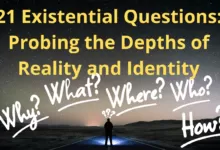Mania and Hypermania: The Hidden Superpower Within -MindSterk

Ever heard of “hypermania”? Picture waking up feeling like you’ve had three cups of coffee, your mind racing faster than a Formula 1 car. Sleep seems like a distant memory because your energy levels are through the roof. You’re confident and convinced you can conquer the world in a day. But wait, what’s this? Suddenly, decisions are flying out of your mouth before you even realize you’ve made them. Could this be “hypermania,” a turbocharged version of mania? Let’s explore this phenomenon together, shall we?
What is Mania?
Mania is much more than just having lots of energy. It’s a main sign of bipolar I disorder, which causes huge mood swings from mania to depression. People with this condition can feel normal at times. But during manic phases, their feelings and actions get extreme.
Manic episodes can be so intense that they might need hospital care. This helps keep the person safe and well. During these times, they might struggle with everyday life and relationships because of symptoms like:
“Delusions, hallucinations, and feelings of invincibility.”
Not everyone with bipolar I disorder gets sad periods. Depression is common in bipolar disorder. But what sets bipolar I apart is having manic times.
What is Hypermania?
Hypermania is an intensified form of mania often associated with bipolar disorder. While mania itself involves elevated mood, increased energy, impulsivity, and reduced need for sleep, hypermania takes these symptoms to an extreme level. It’s like mania on steroids, where individuals experience even more intense feelings of euphoria, heightened energy levels, racing thoughts, and impulsive behaviour. Hypermania can be disruptive and may require immediate medical attention to manage and stabilize mood fluctuations.
The Severity of Manic Episodes:
Manic episodes differ from person to person. Some have less intense symptoms, while others face severe challenges.
During these phases, a person might show signs like:
- Intense happiness or anger
- Being very restless
- Thoughts that race and speaking very fast
- Not needing much sleep
- Feeling extremely important
- Taking big risks with money, driving, or making snap choices
- Having trouble focusing
Spotting mania signs is key to getting the right help. Managing manic episodes helps those with bipolar I stay stable and healthy.
What does Hypomania feel like?
Hypomania feels like having a sudden surge of energy and positivity. You might wake up feeling like you’ve had the best night’s sleep, yet you’re bursting with enthusiasm and ideas. It’s like being on a constant high, where everything seems brighter, and you feel more confident and capable than ever. Thoughts race through your mind at lightning speed, and you might find yourself talking faster and more passionately about your interests. It’s an exciting state but can also come with challenges like impulsivity and difficulty concentrating.
Those with bipolar II might feel very upbeat or energized during hypomanic episodes. They could be more talkative, need less sleep, and feel extra happy. However, this situation might also lead to risky choices and sudden decisions.
Hypomania, even if less severe, is a key sign of bipolar II disorder. It can mess with a person’s life, from work to personal relationships. Knowing the symptoms of hypomania is important for managing the condition.
“Hypomania is like being in a state of perpetual motion. I feel like I can accomplish anything and everything. However, it’s important for me to recognize when my energy levels are becoming too high and to take steps to manage them.” – Sarah, living with bipolar II disorder
People with bipolar II can swing from hypomanic highs to depressive lows. During downtime, they might feel sad, lose interest in usual activities, or have trouble focusing. This back-and-forth can strain everyday life and personal connections.
Understanding the signs of hypomania and bipolar II is crucial. So is finding the right help. With the correct support, people with bipolar II can have rewarding lives.
Signs of Hypermania and Mania:
Understanding hypermania and mania is vital in dealing with bipolar disorder . Hypermania and mania have similar symptoms but differ in intensity. Knowing these signs helps individuals get the help they need.
Common Symptoms: Mania/ Hypomania/ Hypermania
Here are some common symptoms associated with mania, hypomania, and hypermania:
Mania:
- Elevated mood: Feeling euphoric, high, or extremely happy.
- Increased energy: Having high levels of energy and feeling restless.
- Reduced need for sleep: Sleeping less than usual without feeling tired.
- Racing thoughts: Thoughts are fast-paced, jumping from one idea to another.
- Impulsivity: Engaging in risky behaviours without considering the consequences.
- Grandiosity: Feeling overly confident and having an inflated sense of self-esteem.
- Irritability: Easily becoming agitated or annoyed.
- Increased talkativeness: Speaking rapidly and excessively.
Hypomania:
- Elevated mood: Feeling happier or more energetic than usual, but not to the extreme extent seen in mania.
- Increased energy: Having more energy than usual, but not to the point of feeling restless.
- Decreased need for sleep: Sleeping less than usual but not experiencing severe insomnia.
- Racing thoughts: Thoughts may be faster than normal but not as rapid as in mania.
- Increased productivity: Feeling motivated and able to accomplish tasks efficiently.
- Increased sociability: Being more talkative and outgoing.
- Mild impulsivity: Making decisions more quickly than usual but not engaging in highly risky behaviours.
- Heightened senses: Experiencing the world as more vivid and engaging.
Hypermania: Hypermania is an intensified form of mania, often characterized by extreme symptoms similar to those of mania but more exaggerated in intensity. Common symptoms may include:
- Profoundly elevated mood: Feeling an intense, almost overwhelming sense of euphoria.
- Extremely heightened energy levels: Experiencing an insatiable need for activity and stimulation.
- Severe sleep disturbances: Experiencing severe insomnia or sleeping only a few hours per night.
- Racing and disjointed thoughts: Thoughts may be so rapid and disjointed that they are difficult to control or follow.
- Impulsivity and recklessness: Engaging in highly risky behaviours with little regard for consequences.
- Grandiosity and delusions: Having exaggerated beliefs about one’s abilities, importance, or identity.
- Extreme irritability or agitation: Feeling highly irritable, angry, or agitated.
- Excessive talkativeness: Speaking rapidly and continuously, often without pause.
These symptoms can vary in severity and duration and may require professional evaluation for accurate diagnosis and treatment.
“During a hypomanic episode, I feel extremely energetic and productive. I have racing thoughts and find it hard to focus on one task at a time. My confidence is heightened, and I tend to take risks without thinking about the consequences.”
Severity and Duration:
Hypomania is not as severe as mania and lasts a shorter time, usually a few days. This makes hypomania less disruptive, and it often doesn’t lead to hospital stays. Mania, however, is more intense. It can last over a week and involves serious symptoms like delusions.
The Impact on Daily Life:
Mania can disrupt someone’s life. It affects work and relationships and can lead to financial problems. The impulsiveness and quick thinking that comes with mania often result in bad choices and dangerous acts.
“My symptoms of mania are intense and overwhelming. I have difficulty controlling my impulses and often engage in reckless spending sprees. It’s a cycle that leaves me feeling ashamed and burdened with financial consequences.”
Recognizing these signs is crucial. It helps in seeking the right support. Being aware of hypomania and mania symptoms is key to managing them effectively.

Causes and Risk Factors
We’re still figuring out why bipolar disorder happens. Scientists think our genes and surroundings might influence it. This includes the mood highs of mania and the lows of hypomania.
If bipolar disorder runs in your family, you’re more likely to get it. People with a parent or sibling with the condition are at higher risk.
Things around us can trigger mania or hypomania, too. Not getting enough sleep, taking certain medications, drinking alcohol or drug use can increase the risk. This is true whether someone already has bipolar disorder or not.
While we know these factors matter, more studies are needed. Specifically, how our environment relates to bipolar disorder isn’t completely understood yet.
“The interplay between genetic and environmental factors in bipolar disorder is complex and requires further investigation. Understanding these factors can help us develop more targeted and effective treatment strategies.”
Risk Factors for Bipolar Disorder
Other things can also up your chances of developing bipolar disorder. These include your family background, age, life stresses, and more.
| Risk Factors | Description |
|---|---|
| Family history | Having a first-degree relative with bipolar disorder increases the risk. |
| Age | Bipolar disorder often develops in late adolescence or early adulthood, but it can occur at any age. |
| Stressful life events | Experiencing significant stress, trauma, or major life changes can trigger the onset of bipolar disorder. |
| Substance abuse | Misusing drugs or alcohol can worsen the symptoms of bipolar disorder. |
| Presence of other mental health disorders | Having other mental health conditions, such as anxiety or attention-deficit/hyperactivity disorder (ADHD), increases the risk of bipolar disorder. |
Knowing what causes bipolar disorder and its risks helps us understand it better. But remember, talking to a healthcare expert is crucial for the right diagnosis and treatment.
Diagnosing Mania and Hypomania
Getting the right diagnosis between mania and hypomania is key to treating bipolar disorder well. A healthcare pro does a detailed check. It examines a person’s health history, a physical exam, and symptoms.
When being assessed, it’s vital to share complete health details. This includes any past episodes of mania or hypomania and current medications or health issues. All this info helps the pro give an exact diagnosis.
A physical might be done to rule out other health issues. This exam checks vital signs and other physical signs, looking for physical signs related to manic or hypomanic episodes.
The pro examines symptoms like high energy, less need for sleep, or impulsive actions. For mania, symptoms must last a week. For hypomania, they need to go on for four days straight.
Healthcare pros might also use tools like questionnaires. These help learn more about how symptoms affect daily life.
A deep diagnosis is the first step in making a good treatment plan. It helps pros make care tailor-made, aiming for the best results for those with bipolar disorder.
Diagnostic Criteria for Mania and Hypomania:
| Criteria | Mania | Hypomania |
| Duration of Episodes | At least one week | At least four consecutive days |
| Severity of Symptoms | Severe, may require hospitalization | Milder often does not require hospitalization |
| Functional Impairment | Significant | Minimal to moderate |
| Presence of Psychotic Features | Common | Rare |
Diagnosing mania and hypomania is thorough. It looks at medical history, does a physical check, and assesses symptoms. This full check helps pros diagnose accurately and plan the best treatment for bipolar disorder.
Treating Mania and Hypomania
To handle mania and hypomania well, a broad strategy is vital. This includes psychotherapy, medication, and taking care of oneself. Let’s take a closer look at these treatments.
Psychotherapy
Cognitive-behavioral therapy (CBT) is great for those dealing with mania and hypomania. It helps them spot triggers and make coping plans. Patients learn about their condition and find ways to control their feelings and actions in therapy.
“Psychotherapy is a vital component in the treatment of mania and hypomania. It provides individuals with the tools and support they need to navigate their symptoms and lead fulfilling lives.”
Medication
Medication is key in keeping moods stable and making manic or hypomanic episodes less severe. Mood stabilizers, like lithium, help with mood swings and keep them from coming back. Sometimes, antipsychotic medicines are also used for symptoms like seeing or hearing things. Finding the right medicine and dose with a doctor’s help is important.
Self-Care Strategies
Therapy and medicine aside, self-care is also critical for mania and hypomania. It’s about leading a balanced life and forming healthy routines. Exercising, keeping a steady sleep schedule, practising stress-busting methods, and avoiding triggers are key to self-care.
Having people who support you matters a lot. I enjoy activities, stay close to family and friends, and ask for help when needed to manage symptoms.

When you mix therapy, medication, and self-care, managing mania and hypomania becomes doable. Working with doctors to tailor a plan to your needs is crucial.
Coping with Mania and Hypomania
Dealing with mania and hypomania means using strategies to handle symptoms and keep well. With the right coping strategies, people with bipolar disorder can lessen the bad effects of manic or hypomanic episodes. This improves their life quality.
Learning about the Condition
Learning about mania and hypomania is a key first step. Knowing the symptoms, triggers, and treatments helps people understand their mental health better. It lets them make smart choices for their care.
Identifying Personal Triggers
Everyone’s experience with mania and hypomania is different. It’s important to figure out what personally triggers these episodes. This might mean keeping a mood diary to notice mood swings, energy shifts, and actions that come before episodes. Knowing early warning signs means you can act early to handle symptoms.
Maintaining Support Systems
Having a strong support system is crucial for managing bipolar disorder. Including family and friends in therapy and treatment plans offers great support and understanding. It helps reduce loneliness and offers emotional support when it’s most needed.
Reaching Out for Help
Knowing when to seek more help and doing so is critical for coping with mania and hypomania. Support groups in real life and online offer a safe environment to share and learn. Meeting with mental health experts like therapists or psychiatrists can also help develop coping strategies effectively.
“Reaching out for help is not a sign of weakness but an act of strength and self-care.”
Remember, dealing with mania and hypomania is a process that needs patience, thinking about oneself, and a dedication to self-care. Applying these strategies, keeping a support network, and seeking help when necessary can help people with bipolar disorder live rewarding lives.
The Importance of Recognizing Mania and Hypermania:
Recognizing mania and hypermania is crucial due to their potential impact on individuals’ lives. Both states, commonly associated with bipolar disorder, can manifest in heightened energy levels, impulsivity, elevated mood, and decreased need for sleep.
Identifying these episodes early on allows for timely intervention and proper treatment, which can prevent potential negative outcomes such as impulsive decision-making, financial difficulties, relationship strains, and even hospitalization.
Moreover, understanding the distinction between mania and hypermania is essential. While mania represents an elevated mood and increased activity often associated with bipolar disorder, hypermania denotes a more intense and exaggerated form of these symptoms, requiring heightened vigilance and intervention.
By recognizing the signs of mania and hypermania, individuals, their loved ones, and healthcare professionals can work together to implement effective coping strategies, medication management, and support systems to promote stability and improve quality of life.
Improving Quality of Life through Symptom Recognition and Treatment Adherence
Bipolar disorder is long-lasting and needs ongoing management. Spotting signs of mania and hypomania early helps individuals take an active role in their care. This leads to better decisions for their health.
Getting to know the symptoms gives individuals power back. They can identify what triggers an episode and take steps to lessen its effects. Actions might include stress-reducing techniques, consistent sleep schedules, and avoiding alcohol or drugs.
Sticking with treatment is essential for keeping balanced. Following the doctor’s advice, taking medicine as prescribed, and going to therapy can stabilize mood. This reduces how often and how severe manic or hypomanic episodes are, which improves life overall.
Individualized Care: Tailoring Treatment Plans for Long-Term Stability
Every patient with bipolar disorder has different needs. Talking openly with healthcare teams ensures treatments match individual symptoms, challenges, and aims.
By keeping communication lines open, patients and doctors can design a thorough care plan. Adjustments might be needed for medication, or adding therapy and self-help steps could help.
Alongside expert care, self-help practices are crucial for wellness. This includes relaxation activities, regular exercise, balanced eating, and enough sleep.
Seeking Help and Support
If you or someone you know is experiencing mental distress, get help fast. It’s crucial to act swiftly when you’re feeling down. Many people and places are ready to support you during hard times.
Utilizing Crisis Hotlines and Helplines
Crisis hotlines and helplines are a huge help for those struggling. They are run by professionals who know how to deal with tough situations. If you or someone close needs to talk, these counsellors can help. They’re here for you day and night, every day.
Remember, reaching out for help is a sign of strength.
Accessing Emergency Services
In serious situations, calling emergency services is vital. They offer quick help for those in a severe mental health crisis. Always stay with the person in trouble until help arrives. Making sure they’re safe is very important.
Online Crisis Text Lines
There are also text lines for help if talking feels too hard. This way, you can get help quietly and privately. Trained counsellors will talk with you via text and offer help right away. It’s a good option for those who prefer texting to talking.
Help is always there, and many professionals want to support you. If you or someone you care about needs help, don’t wait to reach out. Asking for help is a brave step toward feeling better.
Conclusion
In conclusion, mania and hypermania represent significant aspects of bipolar disorder, characterized by intense mood elevation, heightened energy levels, and altered behaviour. While mania presents a severe form with potentially disruptive consequences, hypermania denotes an even more intensified state, requiring heightened vigilance and intervention.
Recognizing the signs and symptoms of these mood states is crucial for timely intervention and effective management. Early diagnosis and appropriate treatment, including medication, therapy, and lifestyle adjustments, are essential for stabilizing mood and preventing potential negative outcomes.
Furthermore, increased awareness and understanding of mania and hypermania among individuals, their families, and healthcare providers are paramount for reducing stigma, facilitating early intervention, and providing necessary support.
By addressing mania and hypermania proactively, we can enhance the quality of life for individuals affected by bipolar disorder and promote long-term stability and well-being.






